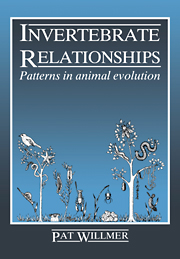1 - Approaches to animal phylogeny
Published online by Cambridge University Press: 08 January 2010
Summary
Introduction
Phylogenetic study is important, and is possible. There is a right answer to the question of how all the familiar living animals are related to each other; they do, at some point in the past, share common ancestral forms. And looking for that right answer, though it is surrounded by much theoretical debate, is not purely a matter of academic speculation. The search in itself is feasible, for there are many clues and possible sources of evidence; furthermore, the search is informative and, above all, interesting. This book is written to try to convince both students and teachers of these views, and to introduce new insights and sources of evidence that bear on the problem, particularly from the application of technological innovations.
However, there are several other related reasons for a book of this kind. Firstly, phylogenetic study is in itself a serious and stimulating challenge for any zoology student seeking to understand the patterns and principles of animal evolution. Very few courses in vertebrate zoology are conducted without a sound phylogenetic framework, yet it seems that when the other 99% of animals – the invertebrates – are at issue we are only too often quite happy to leave phylogeny aside. Many courses now consider the invertebrates independently of their evolutionary framework, or with such a meagre (and quite probably incorrect) treatment of the degrees of relationship that little or no underlying pattern can be perceived.
- Type
- Chapter
- Information
- Invertebrate RelationshipsPatterns in Animal Evolution, pp. 1 - 14Publisher: Cambridge University PressPrint publication year: 1990
- 2
- Cited by



